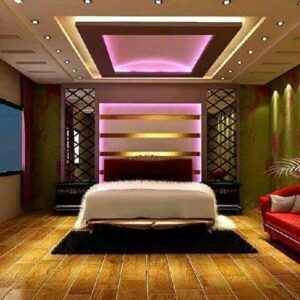“Interiors” refers to the internal or inside spaces of a building, residence, or structure. The term is commonly used in the context of architecture, design, and home decor to describe the arrangement, decoration, and overall aesthetic of indoor spaces. Interior design focuses on creating functional, visually pleasing, and harmonious environments within these enclosed spaces.
Key aspects of interiors include:
- Space Planning: Interior designers plan and organize the layout of a space to optimize functionality and flow. This involves determining the placement of furniture, fixtures, and other elements to create a balanced and efficient environment.
- Color Palette: The choice of colors plays a crucial role in interior design. Designers select color schemes that align with the intended mood and purpose of the space. Colors can influence the perception of size, brightness, and atmosphere within a room.
- Furniture and Furnishings: The selection and arrangement of furniture, fixtures, and furnishings are essential elements of interior design. This includes choosing appropriate pieces that fit the style and purpose of the space.
- Lighting: Interior lighting design involves planning the placement and type of lighting fixtures to achieve the desired ambiance. Proper lighting enhances visibility, highlights design features, and contributes to the overall mood of the space.
- Materials and Finishes: The materials used for flooring, walls, ceilings, and other surfaces contribute to the aesthetics and functionality of interiors. Interior designers consider factors such as durability, ease of maintenance, and visual appeal when selecting materials.
- Aesthetics and Style: Interiors reflect a specific design style or aesthetic, whether it be modern, traditional, minimalist, eclectic, or a blend of different styles. The choice of decor, accessories, and artwork contributes to the overall design theme.
- Functionality: The practical use of a space is a fundamental consideration in interior design. Designers work to ensure that the layout and arrangement of elements meet the needs and activities of the occupants.
- Spatial Atmosphere: The overall atmosphere or mood of a space is carefully crafted through the combination of design elements. Whether aiming for a cozy, formal, casual, or vibrant atmosphere, interior designers use various techniques to achieve the desired spatial character.
Interior design is a multidisciplinary field that involves a creative and systematic approach to enhancing the functionality and aesthetics of indoor spaces. Interior designers collaborate with architects, contractors, and clients to create personalized and well-balanced interiors that meet both practical and aesthetic requirements.






